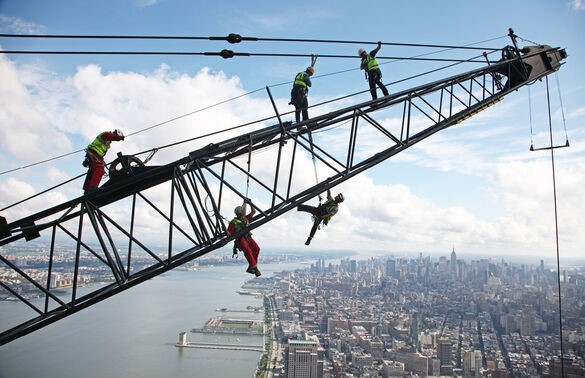The Freedom Tower in NYC: A Joint Effort in Rebuilding the Nation
Seventy feet below ground level, at the bottom of Lower Manhattan’s bedrock, an engineering marvel resurfaced following the events of September 11. This was a massive void, known as “the bathtub,” occupying an area of sixteen acres, and was made possible due to a specialized foundation system. It was because of this unique base that the New York Port Authority, the then governor of New York, George Pataki, real estate developer Larry Silverstein, chief architect David Childs, and countless other Americans dared to dream about rebuilding the site of the World Trade Center after the terrorist attacks in 2001. And so, from the depths of an unthinkable tragedy, emerged a powerful story of hope, a tale of how something was built out of nothing but a void, and the sheer power of collective human spirit. But because this site has witnessed one of the worst tragedies of the new millennium, it also bore the tremendous burden of being a hallowed ground, a sacred space. This duality of the site, a place of hope and rebirth, as well as death and loss, is what makes the redesign of the site and construction of the Freedom Tower, and the surrounding complex of the World Trade Center site, such a historic and poignant event in recent history.
This was also a story about a clash of male egos. At various points of the construction process, the heavyweights involved with the project found themselves at odds with one another. Pataki and Silverstein did not see eye to eye; and neither did Daniel Libeskind, who designed the masterplan for the WTC site, and SOM’s David Childs, who was hired by Silverstein to build a tower on Libeskind’s masterplan. Libeskind also clashed with Silverstein and ended up filing a lawsuit against the developer over payment issues. Even the two co-authors of Once More to the Sky, Scott Raab and Joe Woolhead started off their professional relationship on an unpleasant note. These collisions perhaps alluded to the immense responsibility these men felt in fulfilling the humongous task they were undertaking: rebuilding the heart of the nation.
Woolhead and Raab painstakingly attempt to paint the figures involved with this process – the politicians, the developers, the architects, the engineers, the steel workers, the blasters, and the victims’ families – with the same amount of compassion and sensitivity. It is evident in the authors’ prose that the collective trauma and grief was embedded in the heart and soul of all New Yorkers, and perhaps this acted as a catalyst for redeveloping the entire site in a new way within just a decade. However, as with any other large-scale construction, the project had several hiccups along the way. After the initial design was finalized, the NYPD alerted the Port Authority about security concerns regarding the proposed tower, which caused a two-year delay in reconstruction of the whole complex. There were challenges regarding ownership of the tower between the Port Authority and Silverstein Properties. There were also grievances from the victims’ families regarding the design of the National September 11 Memorial. Despite all the hurdles, the reconstruction of the Lower Manhattan site went on and the Freedom Tower was completed in 2014.
Shortly after the attacks, New York gallery owner, Max Protetch invited some of the renowned architects across the world to submit proposals for an exhibit on the redevelopment of the WTC site, which was known as Ground Zero back then. He imagined that seeing the design proposals would be a “cathartic experience” not just for him and the architects themselves, but the public as well. Over a hundred architects submitted their proposals for the exhibit, which were then compiled in Protetch’s book, A New World Trade Center. The proposals offered a wide variety of innovative design proposals from some of the world’s leading designers, such as Billie Tsein and Todd Williams’ idea of towers connected like tree branches, a joint initiative by a group of architects who envisioned two beams of light instead of buildings, Paolo Soleri’s “secular cathedral,” and Michael Graves and Zaha Hadid’s concepts of imagining a building as a city.
While New York grappled with the enormity of that day’s tragedy, the original WTC buildings’ builders mourned the loss of the architecture as well. Charles Maikish, who was involved in recovery of the World Trade Center after the 1993 bombing and coordinated the reconstruction of the site after 9/11, expressed the loss of the space itself, one that he believed had a “psychic energy.” And while buildings are not human beings with souls, architecture itself can be soulful, as was evident in the Twin Towers. The aftermath of the 9/11 terrorist attacks also proved the social, political, and economic significance of architecture, as highlighted by Protetch’s book. Because this was not just a monumental piece of architecture by Minoru Yamasaki, it was a representation of the hopes and dreams of countless Americans, and immigrants who arrive in New York every day in search of the American dream. Rebuilding the WTC site showed not only the strength and resilience of that dream, but also proved how collective effort can pave the path for collective healing and recovery for the country and the global community.
